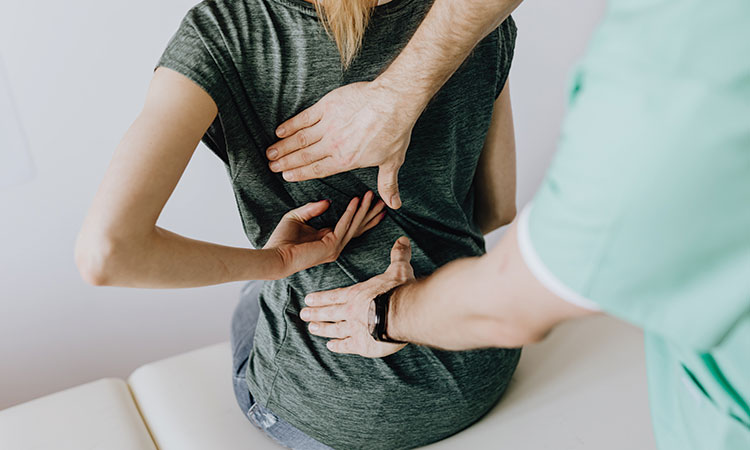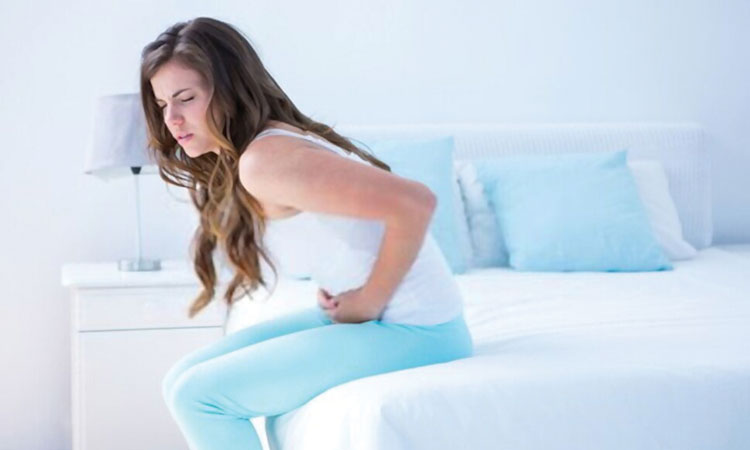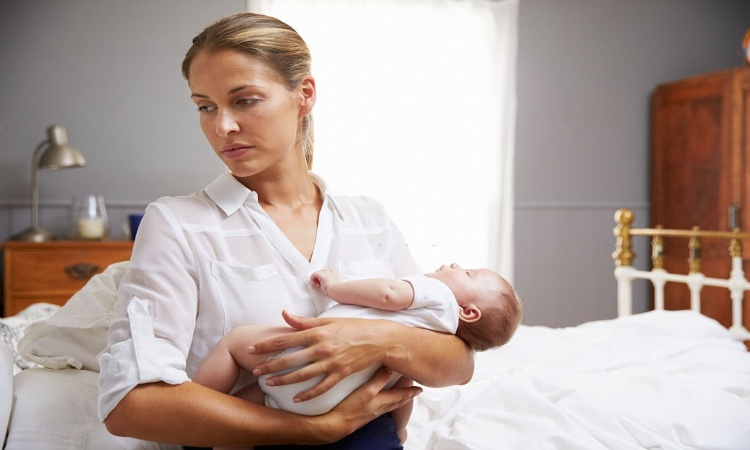Childbirth may stop the side effects of pregnancy like cravings, nausea, mood swings, etc. However, after pregnancy, your body has still not restored to its previous form. You want to try diets and start exercising, but did you know there are some long-term and serious risks of exercising too soon postpartum? Well, that is true.
Exercising too soon postpartum could lead to severe complications that could cause irreparable damages to your body. Make sure you know the risks of exercising too soon postpartum before you begin your fitness journey.
9 Risks of Exercising Too Soon Postpartum
If you are a person who exercised regularly prior to pregnancy, you will want to get back in the game. However, during pregnancy, your body undergoes many physical and mental changes. Exercise is only advisable once your body is ready for rigorous physical activity.
Our panel gynecologist, Dr Ankita Patel Tayal, says that overexertion can lead to complications in pregnancy and should be avoided. One should pay close attention to adequate hydration and temperature control of the environment while pregnant, especially if the patient is new to exercise and just beginning a regimen.
Here are 9 risks of exercising too soon postpartum:
1. Vaginal laceration opening
During normal births, it may become difficult for mothers to give birth to babies that are too large for their birthing canal. In such cases, gynaecologists make a cut in your vagina to broaden the birthing canal for the delivery, called episiotomy.
According to a study, 11% of US women undergo surgery due to difficult vaginal births. Episiotomies always require extra time to heal than other deliveries. It can even make difficult for you to use the toilet, and if you think of exercising like this, it can be a huge mistake.
If you start exercising too soon after an episiotomy, it may lead to another virginal laceration opening. This is one of the most common risks of exercising too soon postpartum. You need to give your body time to heal, and unless the stitches are dissolved and your doctor gives you a go-ahead, wait it out.
2. Increased back pain

During pregnancy, the uterus gets larger, which leads to an anterior pelvic shift. An anterior pelvic shift is a condition wherein your weight shifts to the front portion of the body. Anterior pelvic shifts cause the lower back muscles of your body to contract. Coupled with hormonal imbalances, back pain after delivery remains a constant in most pregnant womans’ lives.
When you start exercising, these lower back muscles will cause shooting pains in your back. Before you actually start full-fledged exercise routine, you need to strengthen your back first. Cat-camel poses really help out in core strengthening, so can try that meanwhile.
Ensure that you have a postpartum workout trainer to guide you with the right postpartum exercises.
3. Leaking while working out
Many women often face urine incontinence after conceiving. Urine incontinence refers to a condition where women leak unintentionally.
During pregnancy, there are many hormonal changes that cause your pelvic floor to become more relaxed. This can result to sudden urine leakage during laughing, sneezing and even exercise.
A study suggests that 60 per cent of women experience urine incontinence, pelvic prolapse and general pain postpartum. Urine incontinence eventually resolves on its own with time. However, make sure that this condition is taken care of before you start exercising again.
4. Postpartum bleeding after exercise
After giving birth, there is a bloody discharge that comes out of the uterus for a period of four to six weeks. This vaginal discharge is known as Lochia.
Lochia contains a combination of blood, uterine tissues and mucus. It is your uterus’s way of cleaning the leftover discharge after your pregnancy. As the days go by, the bleeding gets lighter and eventually stops.
According to a journal, Lochia discharge can still be present up to 6-8 weeks after childbirth,
However, exercising too soon can interfere with this process, that can lead to heavy bleeding after exercise postpartum. This is because there’s an increase in blood flow in our body when we exercise. Make sure to start exercising only after the discharge has stopped.
5. Diastasis recti
One of the most common postpartum conditions faced by women is Diastasis Recti. After giving birth, women are left with a gap between their left and right abdominal muscles. This gap occurs due to the growing uterus in the abdomen which leads to a bloated abdomen.
According to a study, Diastasis Recti normally begins in the second trimester of pregnancy and impacts almost all pregnant women. 53% women go through this condition after childbirth. When working out, if the workout clothes are too tight, they may also cause severe pelvic pains.
A bulge in the stomach may also make you feel conscious of your workout body postpartum. Diastasis recti is most common in women over 35.
6. Risk of muscle injury

During pregnancy, your body releases a hormone called Relaxin. Relaxin helps prepare your body for birth by loosening up the muscles around your pelvic area.
However, after pregnancy, these muscles are loose and weak and your body isn’t ready for exercise. It can take up to a year for your body’s muscles to tighten up again.
A study suggests that the muscles of the pelvic floor stretch up to 259% in order to accommodate the body for childbirth.
Risks of exercising postpartum can involve tearing of ligaments, muscle injuries and muscle strain. You may also experience joint pains in the knees and ankles, in addition to muscle pains.
7. Risk of ripping stitches
Women may have stitches due to perineal tears or episiotomies after giving birth. Pressure on your stitches may lead to severe postpartum bleeding and may rip your stitches apart. It will leave you with an open wound, which could also increase the risk of infection.
Though these stitches don’t tear apart easily, it is always important to take precaution while exercising.
8. Postpartum depression

Many women suffer from postpartum depression after giving birth. Postpartum depression is a condition that is a result of several hormonal imbalances in a woman’s body.
According to a Harvard journal, postpartum depression begins within the first 3 months of childbirth. There could be mood swings, depression, anxiety, etc. that could last up to a year after childbirth.
After giving birth, your body may not look the same as it used to. When you exercise, it may take longer than usual to bounce back to your prior shape.
You may start comparing your body to other women around you which could trigger postpartum depression. Always remember, every body is different. While it may take longer, you will eventually be able to get into shape again.
9. Prolapsed uterus
The physical strain after childbirth may cause a postpartum prolapse which could damage your muscles, pelvic floor and tissues. A prolapsed uterus makes your uterus slip down into your vagina. A postpartum prolapse occurs due to prolonged pushing or multiple births.
High impact exercise, such as abdominal exercises and weight lifting after pregnancy, may cause a prolapsed uterus. Symptoms of a prolapsed uterus include discomfort in your vagina, seeing a lump coming out of your vagina, numbness during sex, etc.
If you are suffering from unusual symptoms such as soreness or headaches after exercising, you should consult a doctor. It is always better to consult a fitness expert who specializes in postpartum exercise regimens. This will ensure that you have a regulated workout program, without having to overstress your body.
Dr Ankita Patel Tayal, a practicing obstetrician for more than 1years,rs advises all women to keep two things in mind as they resume intensive exercise :
- Your body just made and delivered a baby. That takes a lot of work, and almost no one bounces back overnight.
- Don’t compare yourself to elite athletes or celebrities. They likely had extreme fitness training and medical supervision during pregnancy and postpartum, which is an unrealistic scenario for most people.
FAQs
Many women ask doctors, when can I run after giving birth? Getting rid of your postpartum belly may not be that easy at first. Only once your body has healed completely from the postpartum stress can you start exercising again. You may want to begin with lighter physical activity such as walking before committing to a regular exercising program.
After birth, it is important to avoid any strain on your C-section wound. Exercising after your C-Section should only be done after 4-6 weeks postpartum. Start with light exercising such as walking or light yoga and then gradually increase your physical activity. It is important not to overstrain your body as it could cause pressure on your pelvic floor. Avoid exercises that include lifting weights, abdominal strain, bending, etc. Make sure that your gynaecologist clears you to exercise after caesarean delivery.
The ideal time to start exercising after normal delivery ranges between 6-8 weeks of giving birth. By that time, your body heals enough for you to begin physical activity again. If you are thinking of exercising again, wait till your postnatal check. Wait for a period of seven days to ensure that your postnatal bleeding and discharge has completely stopped. You may begin with cardio and Kegel exercises and then move on to more intense exercises. Avoid activities such as swimming until your doctor doesn’t complete your postnatal check-up.


